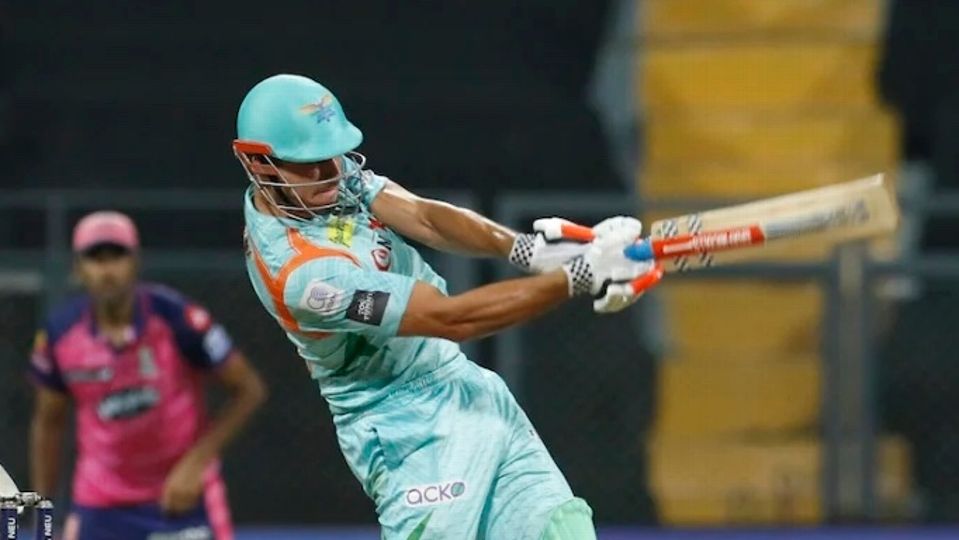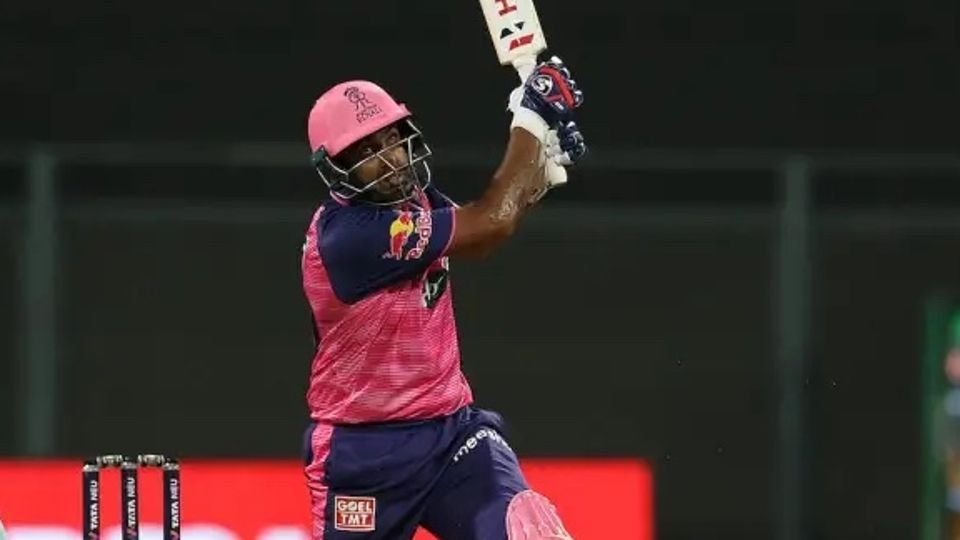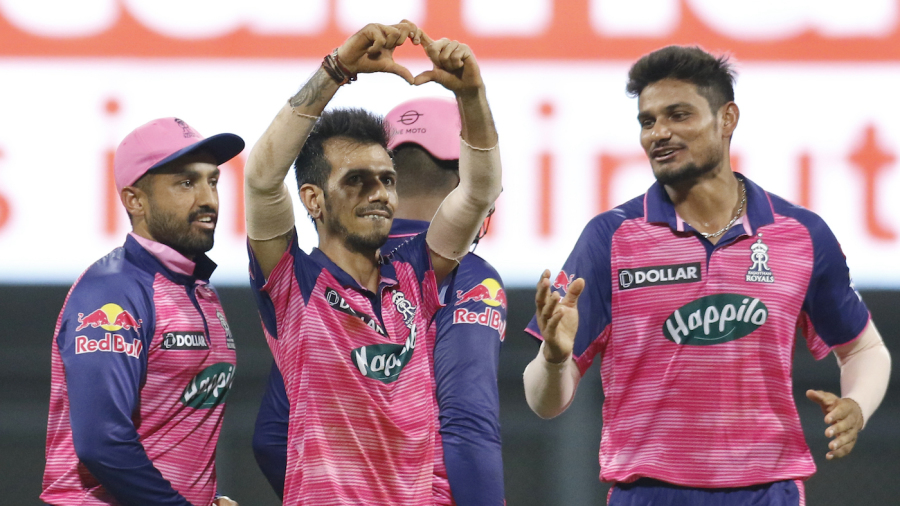Engrossing tactical battle between RR and LSG offers a glimpse into T20's future

What will the future of T20 look like? Well, it might look something like Sunday night's game between Rajasthan Royals and Lucknow Super Giants. Royals eventually won a thrilling contest by three runs, but for the neutral, the result may perhaps have been less significant than the tactical battle that played itself out at the Wankhede Stadium.
LSG unleash their allrounders
International commitments left LSG without Jason Holder for their first two matches of the season, and without Marcus Stoinis for their first four.
On Sunday, both were finally available, and Stoinis came straight into the side, even if it meant leaving out Evin Lewis, who has already won LSG one match off his own bat.
It was clear from LSG's auction strategy that they wanted to build a side with multiple allrounders, which would give them depth and flexibility with both bat and ball. Against Royals, Super Giants had five allrounders in their XI: Holder, Stoinis, Krunal Pandya, Deepak Hooda and K Gowtham.
Despite that, LSG only used five bowlers on the day, with Krunal, Stoinis and Hooda not required. KL Rahul, their captain, explained in his post-match press conference that he felt Krunal's left-arm spin might have been a risk given that Royals had an explosive left-hander in the middle in Shimron Hetmyer from overs nine to 20.
The point of having so many all-round options isn't necessarily to use all of them all the time, but to have favourable options in most situations. The offspinner Gowtham, for instance, has come into the XI for LSG's matches against Delhi Capitals and Royals, two teams with a significant presence of left-handers in their top orders.
Gowtham played a key role on Sunday, taking two wickets and only conceding 14 off 14 balls to Hetmyer, who scored 45 off the other 22 balls he faced.
Royals push Ashwin up the order
Even before the season began, it was evident that Royals had one big weakness to cover up. They had a strong top five on paper, and a strong bowling attack (barring end-overs options) but not a lot of proven muscle at Nos. 6 and 7. In this game, R Ashwin - who has five Test hundreds but who's a touch player rather than a biffer of the ball - was slotted at No. 7.
He eventually ended up at No. 6, walking in to join Hetmyer in the tenth over of Royals' innings. This pushed Riyan Parag, who is perhaps better suited to end-overs hitting than to rebuilding an innings, down to No. 7.
It was a clear example of the growing realisation within T20 that batters' point of entry matters far more than their slot in the batting order.

Ashwin retires out
In a game full of tactical intrigue, this was the biggest moment - a moment fans had been waiting years and years for. Two balls into the 19th over of Royals' innings, Ashwin ran off the field, becoming the first batter in the IPL to retire out. The idea, it turned out, had been discussed within the Royals think tank, and Ashwin had bought into it fully.
It was just what you might expect from a man who has added multiple variations to his bowling repertoire - and has even tried to master an entirely different style of bowling - to stay one step ahead of batters in T20, and a man who has zero qualms about running non-strikers out when they back up too far. Ashwin has always been at the forefront of innovation in all formats of cricket, and he'll probably be proud of his involvement in this moment too.
The reason for the decision, of course, was to have a more accomplished six-hitter at the crease at this point in the game. ESPNcricinfo's Forecaster bumped up Royals' projected score by seven runs when Ashwin retired out, from 152 to 159. With Hetmyer going berserk and Parag hitting a last-over six, they ended up with 165.
Boult goes around the wicket
Trent Boult's modus operandi with the new ball is simple and time-tested. Slant the ball away from the right-hand batter from left-arm over, get it to swing back in, and target bowled and lbw.
On Sunday, however, he began from around the wicket. He's only done it once before in the IPL, in 2018, and that was also against the same batter, Rahul. Perhaps he's seen something in Rahul's technique to believe he has a greater chance from that angle? Perhaps, but at the post-match presentation, Boult revealed the idea was suggested to him on the morning of the match by his Royals and New Zealand team-mate James Neesham.
Wherever the idea came from, the execution was brilliant: full, swinging in late, and stumps splattered as Rahul played all around the ball.
LSG show off their flexible batting order
Ashwin's promotion came out of necessity, thanks to Royals' lack of batting depth. LSG have no such issues, blessed as they are with so many allrounders.
Just as with the ball, it gives them flexibility with the bat. At the fall of Rahul's wicket, they sent in Gowtham - who has a strike rate of nearly 168 in the IPL - as a pinch-hitter.
It didn't work, as Boult had him lbw off the first legal ball he faced. Who would come in next? You might have expected it to be Stoinis, who often bats in the top three in the Big Bash League and for Australia. Or Hooda or Ayush Badoni, both proper middle-order batters.
Instead, it was Holder, who can strike a long ball, but also has a technique that's brought him three Test hundreds. In the circumstances, it was possibly the latter quality that earned this promotion. It didn't quite come off, with Holder scoring 8 off 17, but again, the move showed off the flexibility of LSG's line-up.

Two left-handers at the crease
LSG lost their fifth wicket at the end of the 12th over. They now needed 92 off 48 balls. At this point, Krunal walked in to join Quinton de Kock. It was the first time in LSG's innings that two batters of the same kind - two left-handers in this case - were at the crease at the same time.
Like all teams, LSG value left-right partnerships, but they may have broken the rule here for a specific reason. At that point, the offspinner Ashwin had one over left to bowl - which he immediately delivered - and the legspinner Yuzvendra Chahal two overs.
LSG's attack includes Ravi Bishnoi, an unusual legspinner who prefers bowling to left-handers. Chahal is a more traditional legspinner, delivering the ball with a low-ish arm and bowling legbreaks far more frequently than wrong'uns.
Chahal's record against left-handers is excellent - since the 2019 season, his economy rate against them (7.30) is only slightly worse than it is against right-handers (7.19) - but LSG were trying, perhaps, to maximise whatever marginal gains they could get.
They may also have wanted to delay Stoinis' entry, and backed his six-hitting ability in the closing stages of the match.
As it turned out, Krunal's promotion delayed Chahal's re-introduction slightly - his third over was the 16th of LSG's innings - but he dismissed both left-handers in that over.
Holding Stoinis back, however, nearly allowed LSG to pull off an improbable win. His hitting - and useful contributions from Dushmantha Chameera and Avesh Khan - brought the equation down to 15 off the last over. The match, eventually, was won by Kuldeep Sen - who was making his debut for Royals - who conceded only one run off the first four balls of the final over, using the wide line outside off stump expertly to keep the ball away from Stoinis' hitting arc.
Karthik Krishnaswamy is a senior sub-editor at ESPNcricinfo
